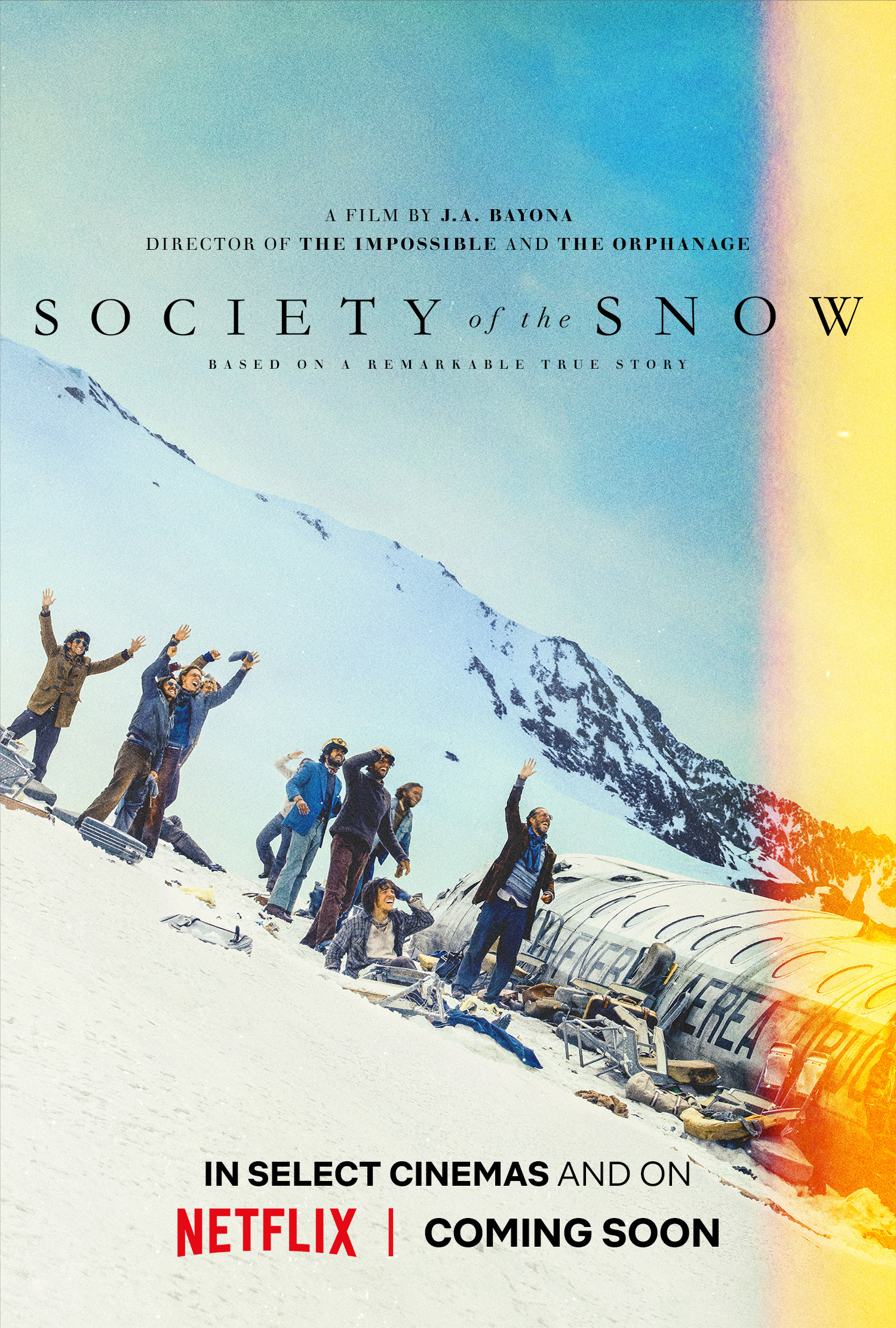in 1993, the movie Alive told us the story of the Chilean rugby team whose plane crashed in the Andes mountain. This was the first time I had ever heard of the tragedy and I remember watching the movie and just being engulfed in the story. At the end of the film, we see an interview with John Malkovich, who plays an older Carlitos, and he states how a few members returned to the site and made an iron cross. This was a good ending at the time but Society of the Snow delves deeper into the story of the young men aboard that fateful flight.
Society of the Snow is told through the narration of Numa Turcatti, played by Enzo Vogrincic, as the outsider who joins his cousin on this trip with the rest of the rugby team. Numa’s character is what brings the viewer closer to the story. It is through his narration that we get to know all of the other players and what is going on in their minds as this tragedy unfolds.
What separates this retelling from the 1993 version is that director J.A Bayona worked with and had some of the actual survivors be consultants for the movie. They also filmed in the exact location of the crash. This put the actors in the same mindset of the survivors of the crash. The filming in the tight quarters created a brotherhood amongst the actors that resemebled the brotherhood the survivors had before the crash.

In order to keep the authenticity on the story of survival, the director decided to stay away from showing anything too graphic to the audience. The plane crash is shown as quick images of the passengers being crushed, impaled, and bones being broken without any lingering shots. This shows the viewer how fast everything happened and does not glamorize the injuries. In the scenes dealing with canibalism, we see the struggles the survivors had with coming to that decision. It is a scene that is filled with great tension and makes the viewer uncomfortable as they try to justify their actions.
Society of the Snow is an amazing story of survival, faith, and not giving up. The score by Michael Giacchino beautifully helps enhance some moments and create the mood for some scenes. The acting by the ensemble cast is superb and each character gets their moment to shine. The final moments of the movie really bring home the importance of their survival. Even thought the survivors are back in the world that thought them dead, they will forever be changed by what they went through in order to live. The final image is a great juxtaposition to the image of the passengers all standing in front of the plane before they took flight. Society of the Snow is not just a movie, it is an experience that needs to be experienced.

Final Thoughts: Society of the Snow gives us a more accurate portrayal of the Chilean rugby crash of Uruguayan Air Force Flight 571. Throughout the movie, we see how the survivors worked through imaginable horrors to attempt to survive long enough to be rescued. Although the story is well-known and the outcome can be easily Googled, seeing their struggle pulls you into the story and has you praying for them to make it out of there. Society of the Snow is a movie about survival and how the aftermath can change you forever.
Kid-Friendly: Society of the Snow tells an incredible story of survival that can be inspiring for kids. Although there are tough moments to watch, they can lead to interesting conversations about what one should do to survive. The scene of the plane crash feels claustrophobic due to the camera placement and might not be suitable for younger kids.
Violence: There is no violence in the movie. The only moments that parents should look out for are the plane crash scene and the moment when they talk about eating the dead. There are never any scenes that explicitly show them cutting up the bodies but the action is implied.
Society of the Snow is now streaming on Netflix.
In 1972, the Uruguayan Air Force Flight 571, chartered to fly a rugby team to Chile, catastrophically crashes on a glacier in the heart of the Andes. Only 29 of the 45 passengers survived the crash and finding themselves in one of the world’s toughest environments, they are forced to resort to extreme measures to stay alive.
